Jean-François Leroy launched Visa Pour l’Image, the international photojournalism festival, in Perpignan in 1989. Before heading up the festival, Leroy was shooting reportage for the agency Sipa Press and also working for Photo-Reporter, Le Photographe, Photo-Revue and Photo Magazine. He is the chairman of the company Images Evidence.
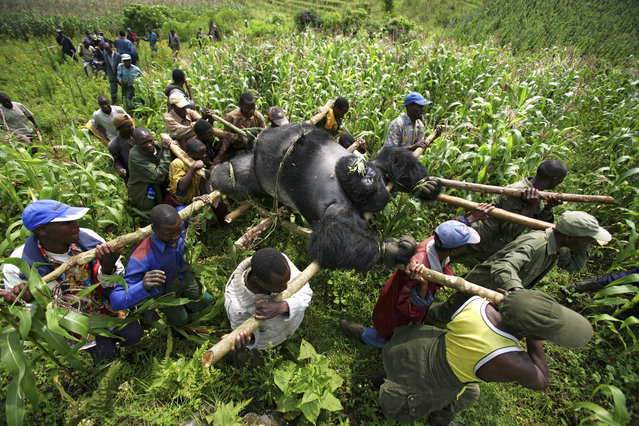
2008 Visa d'or Feature: Brent Stirton. Conservation Rangers from an Anti-Poaching unit work with locals to evacuate the bodies of four Mountain Gorrillas killed in mysterious circumstances in the park, July 24, 2007, Virunga National Park, Eastern Congo. A Silver-Back Alpha male, the leader of the group was shot, three females were also killed. Two of the females had babies and the other was pregnant. The two babies were not found and it is thought that they will have died of stress and dehydration. The motivation for the killing is not known but it is suspected that there are political motivations. The local illegal Charcoal industry clashes with conservation efforts in this very poor area and Rangers have been threatened, tortured and killed as a result of this clash of political and economic wills. Over 100 Rangers have been killed in their efforts to protect the Gorrillas of Virunga, one of the world's most endangered species. The Congolese Rangers in this particular group are working with Wildlife Direct, a Conservation organisation. The Rangers receive a salary based on donations to Wildlife Direct and perform one of the most dangerous jobs in the world of wildlife conservation. The DRC has the highest toll of human casualties of any country since the second world war, a figure in the region of 4.6 million dead as a result of war and resultant displacement, disease, starvation and ongoing militia violence. “A small miracle occurs every night in Perpignan: Jean-François seduces us back into feeling pride and common purpose through the greatest slideshow on earth. We sit there enraptured; when the work is magnificent, we are moved, uplifted and re-energized. Jean-François has found a way of holding up a mirror to the best in us and through that mirror we remember who we are and why we love this profession. Our petty jealousies, our swelling egos, our insecurities – all of these are laid low and we are elevated to an enlightened appreciation of each other. After the shows, this feeling permeates our conversations. We remember that there are extraordinary people amongst us and that we are fortunate to have such role models and to have the possibility of being necessary in the world. Jean-François and his team make that possible every year in their own imitable style; we should all be very grateful”. (Photo by Brent Stirton/Exclusive by Getty Images)
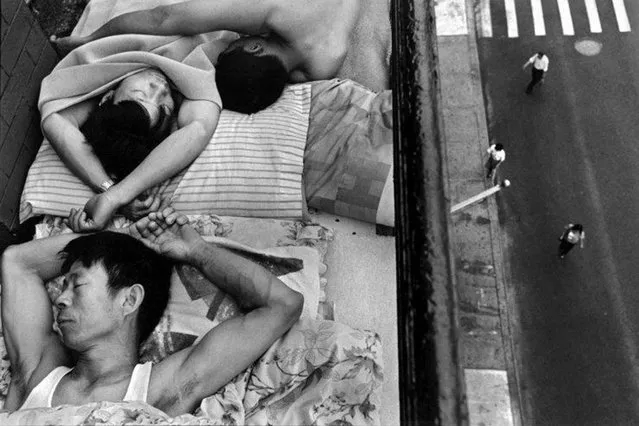
1999 Visa d'or Feature: Chien-Chi Chang. “The compelling quality of the Chinatown project (1992 to present) is its universality. It is about the essential human need to hold hope in your hands and about having the willingness to sacrifice one’s own immediate happiness to realize the dream of giving children a 'better' life. But is economic prosperity worth the social cost? Perhaps the answers to such questions we all ponder can be found in the lives of the people left behind in China and in those of the second and third generation immigrants growing up in the United States. Look at them, and listen to their voices. One may not understand their language, but one can feel their longing”. (Photo by Chien-Chi Chang/Magnum)
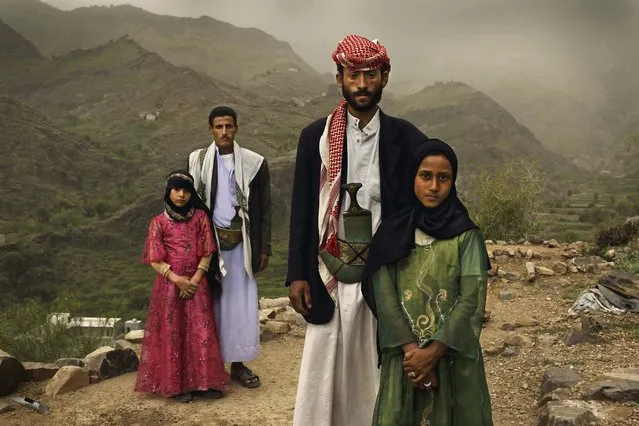
2012 Visa d'or Feature: Stephanie Sinclair. “In 2012, I was once again called to join Jean-François onstage, this time for my child marriage project. This third Visa d'or was special to both of us as the subject matter was the tree that grew from the seed of my first Visa d'or in 2004. Jean-François is an icon in the world of photojournalism. Full stop. He works tirelessly on his baby, this festival that each year gives photojournalists of every pay grade and every nationality a chance to meet with agencies and publications to present their work and talk about future endeavors. We leave energized and reinvigorated to go back into the field to continue capturing the images and telling the stories we care so deeply about. Jean-François, through the Visa Pour l’Image festival, has helped jump start many a career in his time, and his continuing support of the photojournalism community helps us all to grow, evolve and dream a little bigger. All this, and he is a supremely funny human being. His levity truly sets the tone for a celebration of the profession to which we're so dedicated”. (Photo by Stephanie Sinclair)
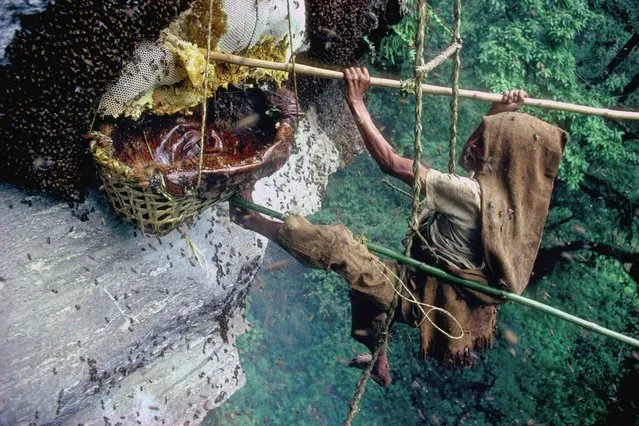
1990 Visa d'or Feature: Eric Valli & Diane Summers. “I took this picture while living with the Gurung Honey Hunters in Nepal from 1986-1987, one of my first great adventures in the Himalayan mountains. Seen here is Mani-Lal harvesting the honey of the Apis Dorsata, which make their nests in the cliffs about 2500m high. The Visa Pour l'Image award was very meaningful and encouraging for me as a young photographer then. It was when I first came to know Jean-François Leroy and saw his relentless dedication to the world of photojournalism. Thanks to him, his sincerity, his courage and his passion, the festival became the showcase for many unknown talents from all over the world”. – Eric Valli. (Photo by Eric Valli/Diane Summers)
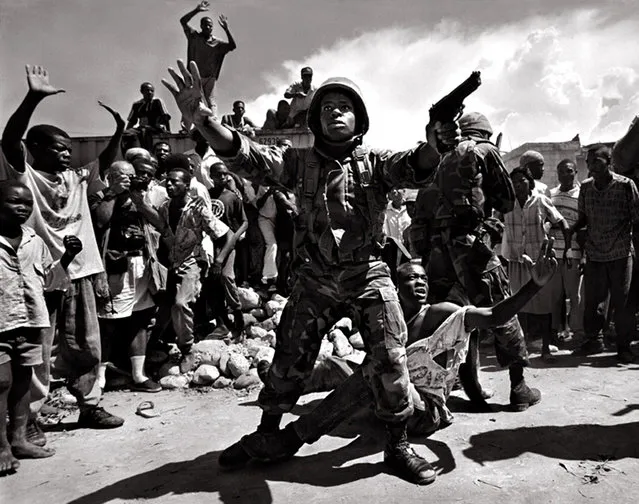
1995 Visa d’or News: Carol Guzy. “Jean-François Leroy has produced a superb world-class venue at Visa Pour l'Image for the exhibition of quality work by photojournalists of eloquent talent. To witness the general public being offered access to documentary photography, waiting in line excitedly and being visibly moved by these images was inspiring. He has been the foundation of this powerful and poignant experience for so many of us. Bravo and merci beaucoup”. (Photo by Carol Guzy/The Washington Post)
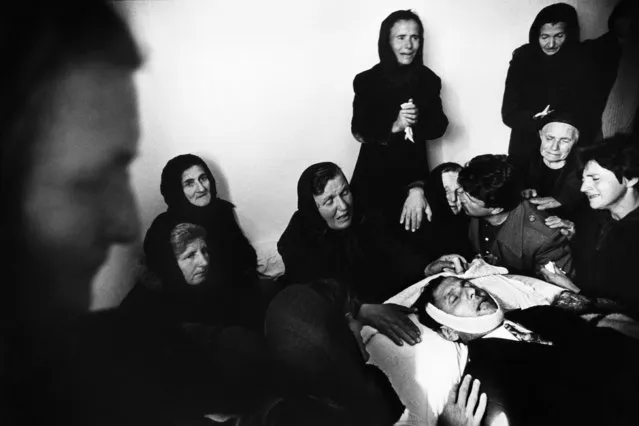
1999 Visa d’or News: Joachim Ladefoged. “When I started out as a young photographer, one of the highlights of the year was to go Perpignan to meet with all my photographer friends. Of course, it was also about networking, meeting the photo editors, seeing the exhibitions and especially sitting in the warm, dark night watching great photography at the screenings. This image, which was a part of the body of work that earned the award, was taken at the funeral of Fassli Veisllari, killed by a stray bullet in the city of Berat in Albania during the riots that followed the collapse of the Pyramid schemes in 1997. Any award you win when you are young is exiting, and I was very proud and happy to win one of the top awards in the business. That year was a very special one for Danish photojournalism, since we left Perpignan with three awards. Jean-François Leroy has given photojournalism a unique voice and place in the world”. (Photo by Joachim Ladefoged)
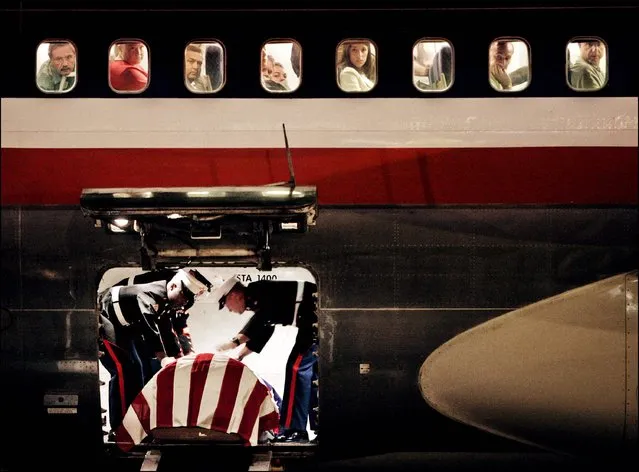
2006 Visa d'or Feature: Todd Heisler. “It's so hard to encapsulate Jean-François Leroy in a few sentences. I am amazed that one person could have as much energy and inspiration as he does. How he can execute something on the scale of Visa year after year and still have the energy to stay up to watch the sun rise at Cafe De La Poste is beyond me. But seriously, its about the work. Without great photojournalism there is no Visa. And that is due in no small part to the near impossibly high standards set forth by Jean-François. I'd be lying if I didn't say the whole Visa experience was overwhelming. But I mean that in a positive way. I was in awe the entire time at the level of talent amassed in one place. Seeing the likes of John Morris and David Douglas Duncan wandering the streets of Perpignan, taking in the projections, reminds me of the responsibility we have to live up to the standards set forth by the generation that came before us. That's the spirit and the legacy of Jean-François”. (Photo by Todd Heisler/Rocky Mountain News)
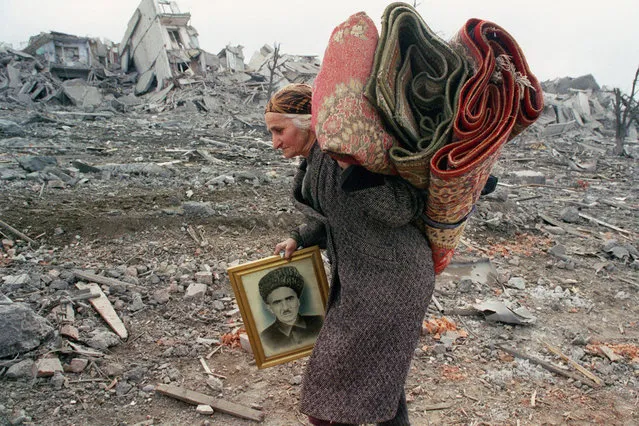
2000 Visa d’or News: Eric Bouvet. “I remember the first festival in 1989 – it was not so big and everybody knew everybody else; it was like a meeting of friends! Today, when I see what it's become, it looks like a world success. I haven't gone as often as I wish, but the few times I have were always strong. After 32 years of work, I enjoy this world of photography – I wish it could be much better, but we must make do with it and we must fight for the survival of photojournalism”. (Photo by Eric Bouvet/Gamma)
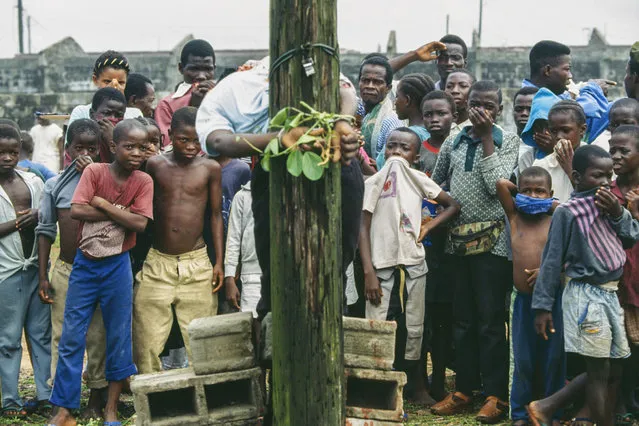
1996 Visa d’or News: Patrick Robert. “I became interested in the war in Liberia at the very beginning of the conflict, in 1990, and covered it until 2003, when I was wounded by gunfire three weeks before the end of the war, while working on assignment for TIME. Liberia was fascinating because it was a futile conflict, with no way out and no hope. It was extremely violent, but journalists could move around and were fairly free to work, particularly as there were so few of us. It was absolute bedlam and anarchy, but strangely enough I feel comfortable in the midst of chaos. Once again I was surprised to get a Visa d’or for the work, firstly because the war was of no great interest to magazines and I hadn’t had much published, and also because I didn’t feel like I had finished the story. The war was far from over, and while I made regular trips back there, after going off to Sarajevo, Baghdad or Kabul, I felt I’d missed out on important events. That’s the really great thing about this festival: it focuses on events that have not been picked up by the magazines but which definitely record our history. The catalog of exhibitions at Visa pour l’Image is a genuine “panorama” covering the history of our time! I like going to the festival every year so that, at last, I can see the full stories (not just the five or six shots that have been published), and also to meet my fellow photographers and friends, and to see the picture editors from around the world and understand what their expectations are. This is my family. Visa pour l’Image is reassurance for me, it’s my equilibrium in my working life”. (Photo by Patrick Robert/Sygma/Corbis)
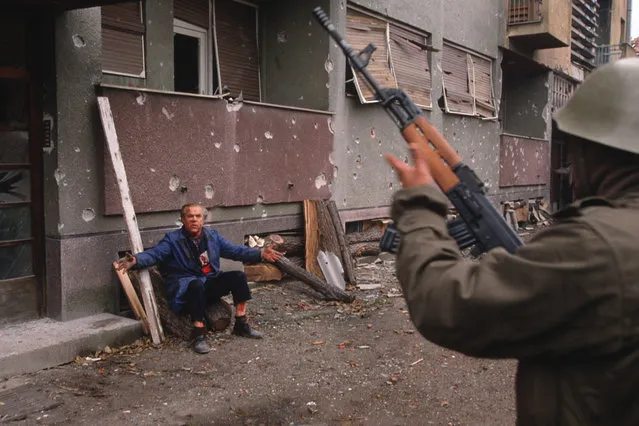
1992 Visa d’or News: Christopher Morris. “This is from my body of work on the break-up of Yugoslavia that was awarded the Visa d'or award for news in 1992. The image I've selected from the series is the day after the fall of Vukovar on November 18, 1991. This is the hand of a Croatian civilian executed by paramilitaries. For me, it's as if a whole nation has been bleeding out into death. As for Jean-François and the festival, both have been and still are a true beacon for the industry. I'm proud to call him a true friend, someone who actually cares about photography and photographers”. (Photo by Christopher Morris)
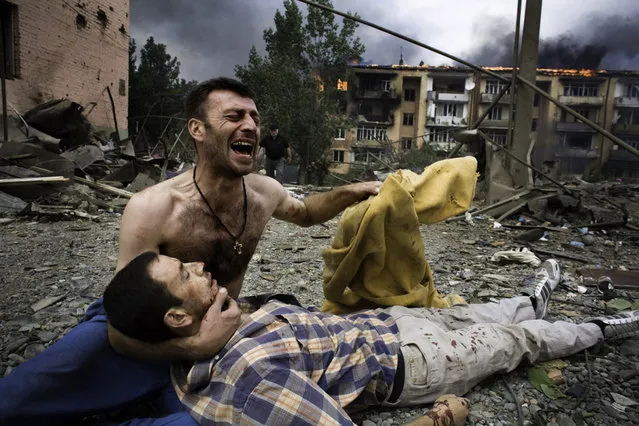
2009 Visa d’or News: Wojciech Grzedzinski. Repeated military incidents on the border line between Georgia and South Ossetia, being part of Georgia's territory and also its rebellious province, caused the conflict to explode on midnignt of August 7, 2008, The irregular militias of South Ossetia received military support from the Russian Army. After a few days of struggle, the Georgian army was forced by Russian troops to leave South Ossetia. The hardest fights took place on a 30 kilometer sector between Gori and Cchinwali. The number of victims on both sides of the conflict is unknown. Georgian man holds body of his relative after attack of Russian air force on three civilian buildings in Gori, about 80 kms from Tbilisi, 9th of August 2008. (Photo by Wojciech Grzedzinski/Dziennik)
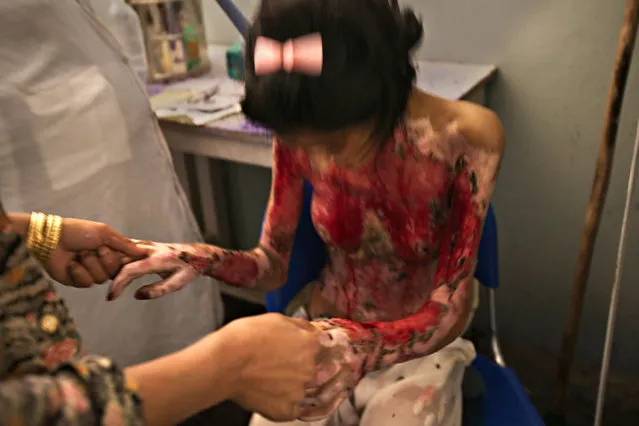
2004 Visa d'or Feature: Stephanie Sinclair. Marzia, 15, struggles while having her burns cleaned in Herat, Afghanistan, August 30, 2003. The painful but necessary ritual is performed daily by the nurse as part of the recovery process. Marzia set herself on fire because she was afraid of her husband's reaction to her breaking the family television set. They were married when she was only 9 years old. “I was honored with my first Visa d'or at Perpignan in 2004 for a story on the self-immolation of women in Afghanistan. I had no idea the work was even nominated, so my winning came as a wonderful surprise. It really was that last thing in the world I’d expected as I'd only been freelancing for about a year at the time and it was also my very first trip to the Visa Pour L'Image festival. I can’t overstate how incredibly encouraging it was to have these intimate and deeply personal photographs about the women I'd met appreciated to such an extent by Jean-François and the international photo community. That story would eventually lead to a decade-long project on the global child marriage issue”. (Photo by Stephanie Sinclair)
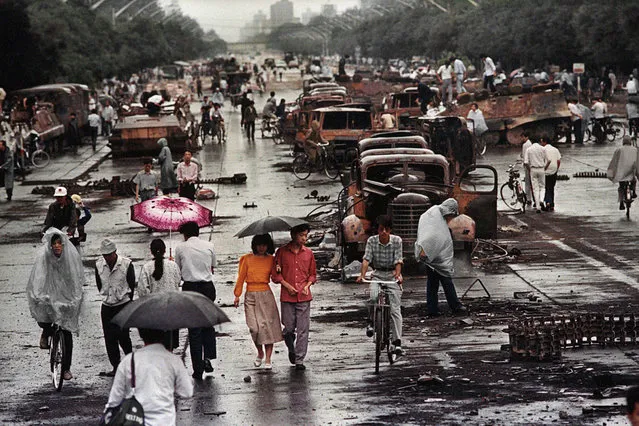
1992 Visa d'or Feature: David Turnley. “In the late summer of 1989, following the storm of revolutions throughout Eastern Europe and the Beijing Spring in Tiananmen Square, where some 2 million Chinese students had their dreams of democracy crushed for that moment in history, I was invited with my tribe to the first international festival for photojournalists from around the world in Perpignan, France. From the moment our plane hit the tarmac on the Mediterranean coast, we were greeted by Jean-François Leroy, a tall, handsome French man with a twinkle in the eye, and passion in his heart, with his contagious smile, sense of style, elegance and graciousness. Ten days later, as I headed back out into the world to later that year photograph Nelson Mandela walking out of prison and to witness the demise of the Soviet Union, I was filled with a renewed sense of conviction of my mission as a photographer, and felt buoyed by the awareness, as revealed by this incredible festival, of the dedication of so many of my colleagues who wake up each morning in some corner of the world, driven with the collective aspiration of documenting humanity in all of our glorious complexities. Merci Jean-François!”. (Photo by David Turnley)
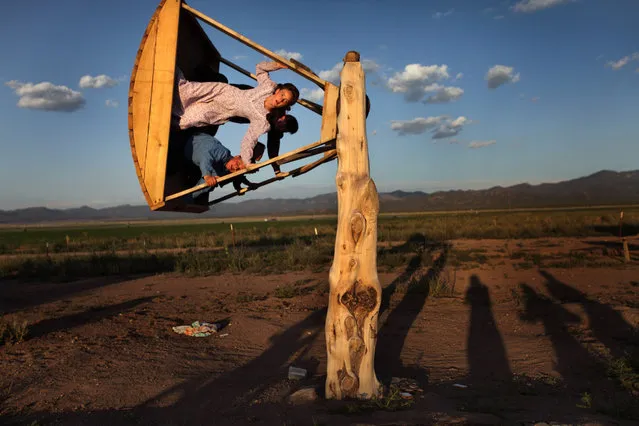
2010 Visa d'or Feature: Stephanie Sinclair. After helping bring in the hay harvest, Amber Barlow, 16, a member of the Fundamentalist Church of Jesus Christ of Latter Day Saints, FLDS, soars on a homemade swing with friends at the 4,000-acre FLDS ranch, in Pony Springs, near Pioche, Nev. on Aug. 14, 2009. Known for their practice of polygamy, the FLDS is the largest practitioner of plural marriage in the U.S. The FLDS church emerged in the early 1900s when its founding members left mainstream Mormon church, largely due to the issue of plural marriage. They gained international notoriety with the arrest of their leader Warren S. Jeffs, who in May 2006 was placed on the FBI's Ten Most Wanted List. In April 2008, Texas Rangers raided their ranch in Eldorado, Texas after receiving over what was later determined to be a hoax call, although authorities eventually removed 440 children from the ranch, which they said had been sexually, physically and emotionally abused. The children are now back at home and the community continues to survive amidst what they consider a battle to over faith and the authorities' desire to end their unconventional way of living. “Jean-François selected my project Polygamy in America to be exhibited at Visa Pour L'Image in 2010. It was my first exhibition at the festival and I was thrilled to have the opportunity to show the world a unique and little-known side of America. The ever-enthusiastic Jean-François and his judges graced the project by granting me my second Visa d'or. It was a thrill and an honor to be a part of it all, among this big family of photojournalists, editors and publishers who flock to Perpignan each year. As anyone in this profession can attest, this job can be a very solitary experience. We’re rarely in the field at the same place and time and have little direct interaction with readers. So, I think for many photographers, the festival, with its awards, slide shows, exhibitions and parties, is not just a rare opportunity to spend time with each other, but also a chance to see how people interact with the photographs we are making – an important aspect of photojournalism, which can be forgotten at times”. (Photo by Stephanie Sinclair/VII)
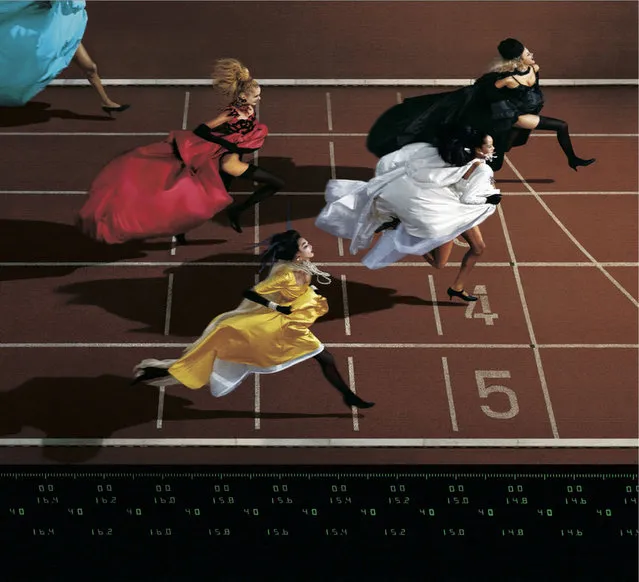
1996 Visa d'or Feature: Jean-Paul Goude. Fashion and Sport: Running, for Elle. (Photo by Jean-Paul Goude)
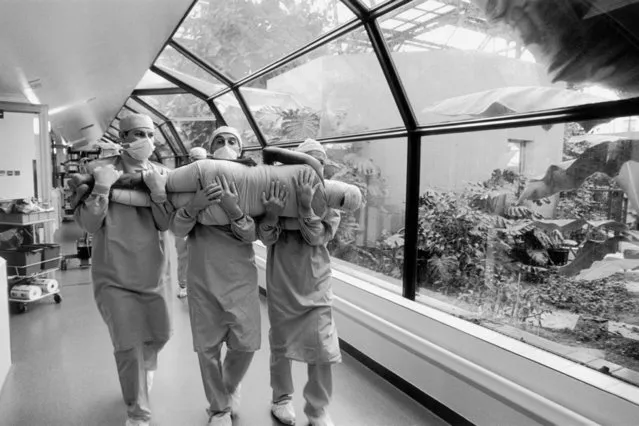
2000 Visa d'or Feature: Raphael Gaillarde. In the Percy military hospital in Clamart (Hauts-de-Seine), the medical team seizes a patient to take him back to his isolated sterile room after having been treated in the emergency ward, France, March 1999. (Photo by Raphael Gaillarde/Gamma)
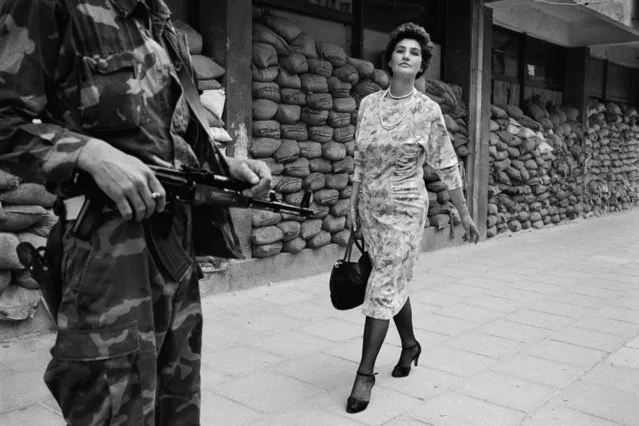
1994 Visa d'or Feature: Tom Stoddart. “It was 1993 and the Siege of Sarajevo was at its bloodiest. I was working on a photo essay documenting the daily lives of women in that war torn city. There I was shooting one day, sheltering by sand bags, when suddenly, a beautiful woman appeared in the deserted street. Her head was held high and she was wearing lipstick, heels and a colorful dress. I shot three or four frames on a Leica as she moved past me; then she was gone. When my story landed on the picture desk at LIFE Magazine they asked me to go back to Sarajevo to try to find the woman and interview her. Days later Meliha Vareshanovic told me, “my message to the watching gunmen who surround my city is simple, you will never defeat us!” Having my work honored twice with a Visa d’or makes me tremendously proud, but the deeper pleasure enjoyed over 25 years is in being part of the Visa “family” that gathers each September to renew old friendships and be inspired by great photojournalism. I have dozens of happy Perpignan memories brought about because of the vision, passion and commitment of one man, the life force that is Jean-François Leroy. Merci beaucoup JFL”. (Photo by Tom Stoddart)
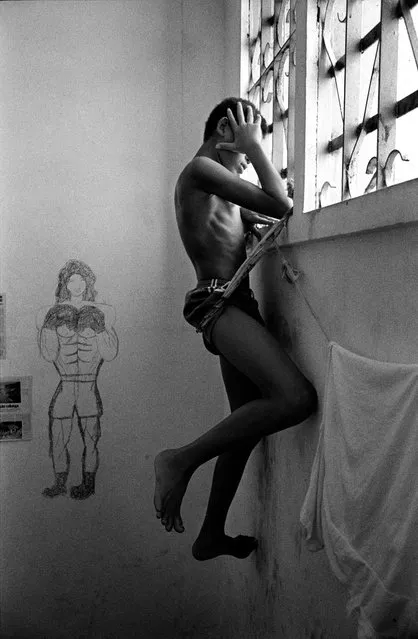
1995 Visa d'or Feature: Francesco Zizola. “It was 1995 and I had just been awarded my first World Press Photo for my work on Brazil's street children. I was a young and unknown photographer from Italy, with little experience about international festivals, and with only a vague idea of what Visa pour l'Image was. Having gone for the first time, I was amazed at the number of stunning exhibitions one could see, of international photo-editors one could meet, of world renowned photojournalists one could get to know. I was even more surprised when my work “Ruas”, on Brazil's street children, was awarded the Visa d'or. It was such a joy for me, especially because I thought that other works deserved the prize more than mine. From that moment Visa pour l'Image became an important annual meeting for me. It was the place where the best work was displayed and the people that made it possible could connect and create new collaborations. Jean-François Leroy has been the heart and mind of all this; he has played such a crucial and fundamental role in promoting photojournalism, giving exposure to young and talented photographers and showing strong and committed work that would otherwise be not seen or soon forgotten. I believe that photojournalism owes him a lot and I wish him to maintain the same enthusiasm and foresight in running the festival for another 25 years”. (Photo by Francesco Zizola/NOOR)
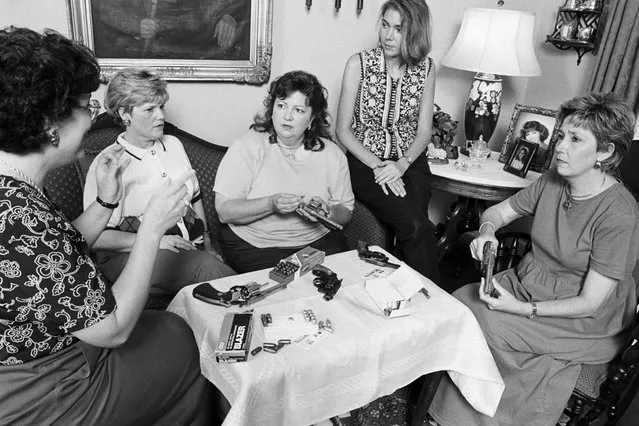
1998 Visa d'or Feature: Zed Nelson. “Gun Nation is a reflection on America's deadly love affair with the gun, exploring the paradox of why the nation's most potent symbol of freedom is also one of its greatest killers. I tried to extend the traditional language and style of documentary photography, employing formal portraiture, reportage and carefully observed still-life images. It became a vital tool to tell the story in an original and thought-provoking way. It was a great honor to receive the Visa d’or at Perpignan for this work. I had first visited the festival as a young photographer, and I had found the exhibitions greatly inspiring. There was no doubt as to the sincerity and devotion displayed by the photographers in their work, and by Jean-François Leroy in his obsessive dedication to showing photojournalism that engages subjects increasingly ignored by an increasingly commercially-driven media. After earning this recognition at Perpignan, my project went on to win a number of other awards, became a cover story in TIME and was published as a book in 2000”. (Photo by Zed Nelson)
27 Aug 2013 10:42:00,
post received
0 comments
